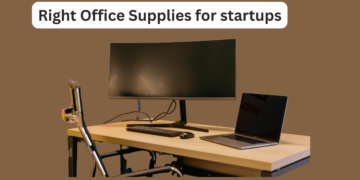The way we work has evolved significantly over the past decade, and the furniture we use must evolve with it. Among all workplace elements, the office table design plays a crucial role in shaping employee productivity, comfort, and even the aesthetics of a corporate environment. A well-designed office table is no longer just a piece of furniture—it is a vital component that aligns with the organization’s identity, work culture, and employee well-being. Companies are now investing more in designs that not only reflect professionalism but also foster creativity and efficiency. This shift is not just about visual appeal; it is also about creating a functional and ergonomic environment that supports long working hours without compromising health and comfort.
How Office Table Design Affects Productivity and Efficiency
The direct correlation between workspace setup and employee performance cannot be overstated. A strategically designed office table allows for better space utilization and minimizes distractions. When tables are designed with integrated cable management systems, proper storage, and adequate surface area, they help in maintaining a clutter-free desk—ultimately leading to better focus. Ergonomics also play a vital role. Office tables that are either too high or too low can cause discomfort, leading to decreased efficiency and even physical strain. Therefore, modern designs often emphasize adjustable features that cater to various employee needs. In collaborative environments, open-layout office tables with modularity offer flexibility and foster team interaction. Meanwhile, for roles that demand concentration, L-shaped and U-shaped designs with partitions can help create focused zones within the office.
Trends Influencing Office Table Design in Today’s Work Culture
As companies embrace hybrid work models, office table design is undergoing a transformation to accommodate new needs. One major trend is the rise of minimalism—clean lines, neutral tones, and clutter-free surfaces. Another popular trend is incorporating sustainable materials. Reclaimed wood, recycled metal, and low-VOC finishes are not only environmentally friendly but also add a modern, organic touch to the workspace. Height-adjustable tables or sit-stand desks are also gaining traction as businesses acknowledge the health implications of sedentary work. Technology integration is another critical element. Built-in charging ports, wireless docking stations, and under-table cable trays are now essential design elements. Moreover, personalization is becoming a key feature. Companies are increasingly opting for custom office table designs that align with their branding and employee preferences, offering a blend of functionality and visual identity.
Choosing the Right Office Table for Your Business Needs
Selecting the right office table requires a thorough understanding of your workspace dynamics, team roles, and overall office layout. Start by analyzing the nature of work—creative, technical, collaborative, or managerial—as each will require a different table configuration. For instance, executive tables are usually more elaborate and incorporate ample storage, whereas hot desks and shared workstations are minimal and space-efficient. Material selection also matters. While wooden tables provide a classic and professional look, glass and metal tables offer a modern and sleek appeal. The size of the table must be proportionate to the room size and should allow free movement without creating congestion. Another crucial aspect is storage integration. Tables with drawers, shelves, or attached filing units are ideal for roles that involve paperwork. Lastly, consider mobility—tables with lockable wheels or foldable designs can enhance flexibility in dynamic work environments.
Enhancing Aesthetics and Branding Through Office Table Design
Beyond functionality, office tables contribute significantly to the interior aesthetics of a workplace. A thoughtfully chosen office table can make a strong visual statement and reflect the company’s culture. For example, creative agencies often opt for unconventional shapes and bold colors to emphasize innovation and out-of-the-box thinking. On the other hand, corporate law firms may go for traditional wood finishes that convey trust and authority. Lighting is another aspect that works in tandem with table design. LED underlights or task lighting fixed on the table can add both utility and aesthetic appeal. When the table design is aligned with the brand’s theme and interior style, it reinforces brand identity among employees and clients alike. Even simple additions like customized logos on table panels or color-coordinated finishes can enhance brand recall and consistency throughout the office space.
Office Table Design for Remote and Home Offices
As more professionals embrace remote work, the need for efficient and stylish office table setups at home is increasing. A home office table should strike a balance between professional utility and residential comfort. Compact designs that fit seamlessly into small spaces without compromising on work surface or storage are ideal. Foldable and multi-functional tables are also in high demand. These designs allow users to convert a table into a console or shelf when not in use, making them perfect for apartments and shared spaces. In terms of aesthetics, home office tables usually align with home décor themes—be it rustic, industrial, or Scandinavian minimalism. The integration of ergonomic features like keyboard trays and monitor risers is also important to maintain comfort during extended work sessions. With remote work here to stay, the evolution of home-based office table design is becoming a niche but essential segment in the furniture industry.
Custom Office Table Design: A Smart Long-Term Investment
Investing in custom office table design can yield long-term benefits for businesses. Customization allows organizations to select materials, sizes, shapes, and finishes that meet their unique operational needs and branding guidelines. While ready-made options may be cost-effective in the short term, they often lack the adaptability that growing businesses require. Custom tables can also be designed to accommodate future changes—like additional employees, new technology, or shifting workspace layouts. This ensures that your furniture remains relevant and functional even as your company evolves. Moreover, by working with professional designers or furniture manufacturers, businesses can create a cohesive look that flows throughout their office, enhancing both employee morale and visitor impressions.
Conclusion: Building Workspaces That Work for You
A well-planned office table design does more than provide a place to work—it shapes employee behavior, impacts efficiency, and speaks volumes about your brand identity. Whether for a bustling corporate headquarters or a compact home office, choosing the right office table is a strategic decision that pays off in terms of functionality, comfort, and aesthetics. As the future of work continues to evolve, businesses that invest in adaptable, ergonomic, and visually aligned table designs will be better equipped to meet the demands of a modern workforce. For all your office furnishing needs, trust the expertise and craftsmanship of Modern office table designs where quality meets purpose.
























